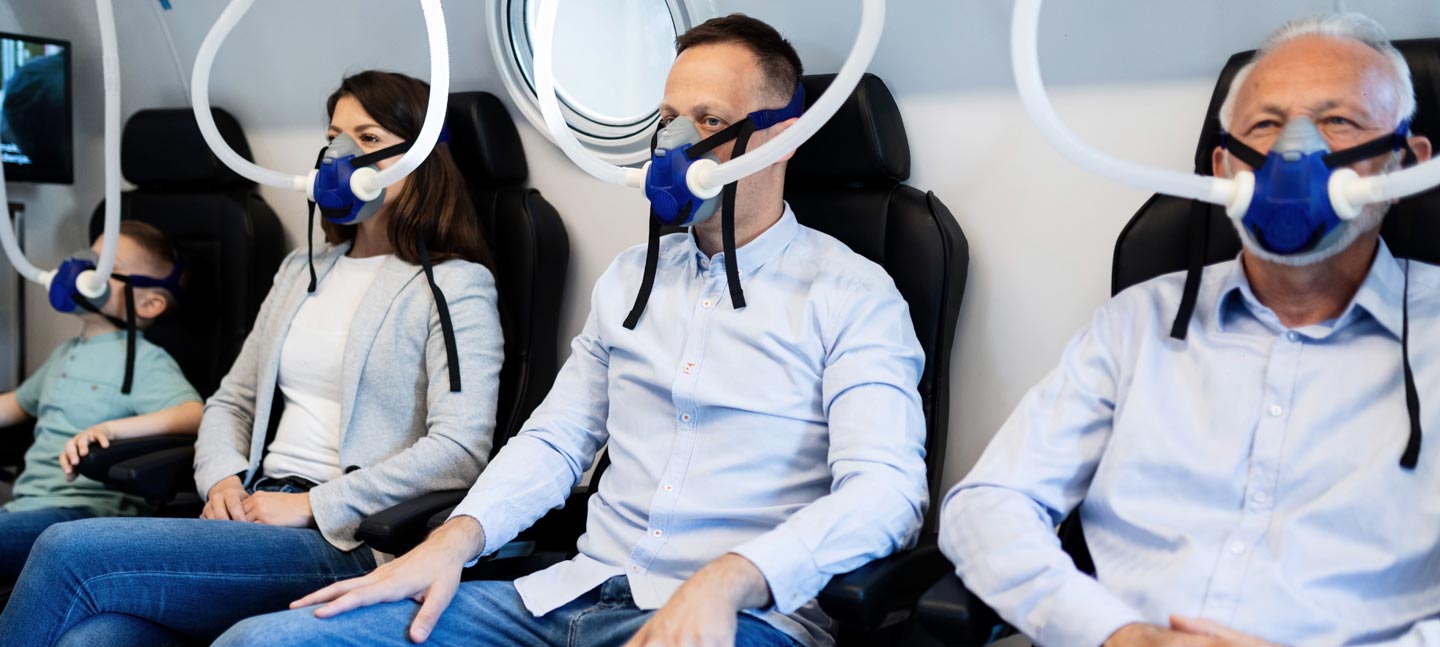During an HBOT treatment, you enter a special chamber that allows you to breathe pure oxygen at a higher-than-average air pressure.
There are two types of chambers: monoplace and multiplace.
Monoplace chambers are designed for one patient. The tube-like acrylic structure resembles an MRI machine, and oxygen is pumped into the chamber itself. In a monoplace chamber, you will typically lie down for your treatment.
Multiplace chambers, or sometimes multiplace rooms, are designed to treat two or more people at a time. Patients in these rooms breathe in oxygen through masks or hoods, and you can be treated while sitting or lying.
During your treatment, you might choose to nap, read, or watch a movie.
Many people ask if getting hyperbaric oxygen treatments hurt; there should be no pain associated with HBOT.
Because you’re in a pressurized chamber, you might experience fullness in the ears, similar to how you might feel on an airplane or other increased altitudes.
You might also experience a temperature difference; the room or chamber might get warmer as the air pressurizes.
When you leave the chamber, you could feel tired or lightheaded. Try to schedule your appointment at a day/time that will allow you to relax afterward.
Your ears might also feel full, which can be relieved by yawning or swallowing, much like you might do while on an airplane or after swimming.
Finally, you might also feel hungry after your treatment, so it could be a good time to treat yourself to a snack!
Your HBOT/wound healing treatment center will prep you for your first appointment. Typical advice includes:
- Eat a balanced meal before you arrive
- Avoid caffeinated and carbonated beverages
- Refrain from smoking
- Wear clean and pure cotton clothing
- Do not use petroleum-based hair or skin products
An individual HBOT treatment session typically lasts from 90 minutes to two hours.
The amount of sessions you’ll need is highly dependent on your specific condition or injury. We often see people need between 10 and 30 treatments. It could be more or less than that based on your diagnosis and insurance coverage.
After your HBOT treatment you might experience some mild side effects, which could include:
- Lightheadedness
- Fatigue
- Temporary vision changes
- Drop of blood pressure
Some of the mild discomforts can be minimized or prevented by following the guidance of your provider, such as avoiding carbonated beverages before your treatment.
HBOT is widely recognized as a safe and effective treatment for a range of conditions, including healing chronic wounds. Complications are rare, but like any medical treatment or procedure, you should always speak to your primary care physician before seeking any type of medical therapy.
Hyperbaric oxygen therapy side effects could include pain or damage to the ears, sinuses, eyes, teeth, and lungs. In rare cases, too much oxygen in tissue could result in oxygen toxicity.
HBOT may not be suited for people who have recently had ear surgery or trauma to the ear, or for those with a history of tinnitus or recurring middle ear infections.
Again, always talk to your doctor before seeking any type of medical treatment.
Many insurance companies, including Medicare and Medicaid, will cover HBOT for approved conditions. It’s best to check your individual coverage to find out if you are eligible based on your individual circumstances.
For example, some insurances will cover HBOT as an adjunctive therapy for wound healing if there are no measurable results after 30 days of standard wound healing therapies.
Our Patient Resources section is full of blog posts from physicians, medical technology professionals, and other experts in the field.

